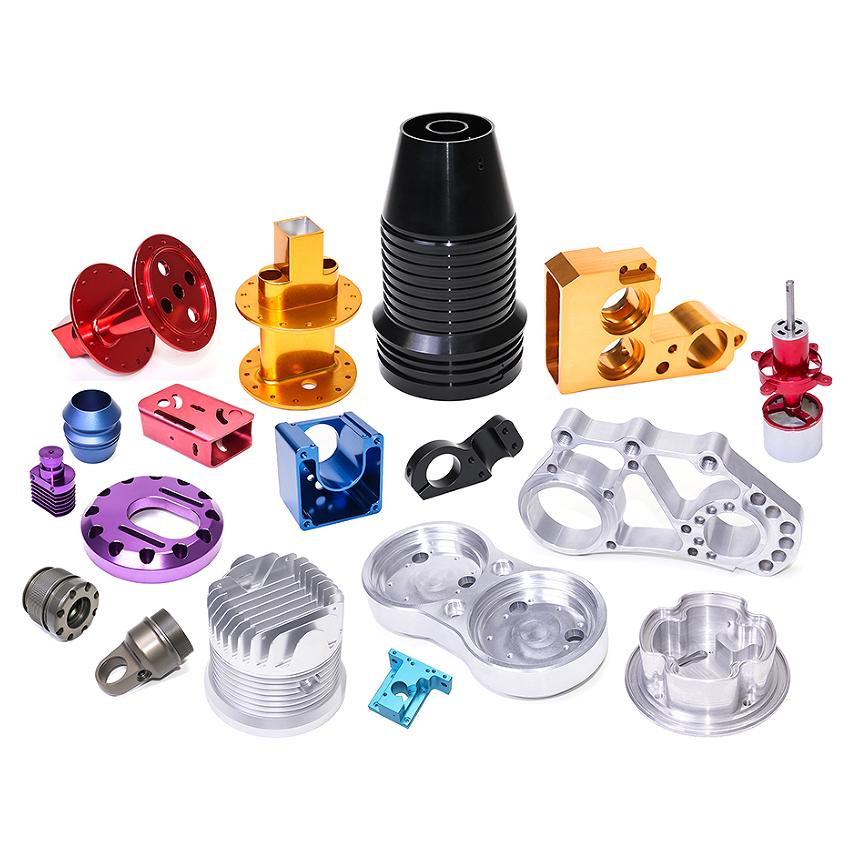First Class Anodizing Service
Basic Parameters of Anodizing
Cleaning: Alkaline and/or acid cleaners remove grease and surface dirt.
Process: Anodizing
Material: Aluminum/Alloy aluminum/Other metal
Color: Gold, blue, purple, grass green, red, black, etc.
Steps:
Cleaning: Alkaline and/or acid cleaners remove grease and surface dirt.
Pre-Treatment: Etching and Brightening
Anodizing:By applying an electric current through an acid electrolyte solution, a dense oxide layer is formed on the metal surface to enhance its corrosion resistance, wear resistance, and aesthetic appearance
Coloring:This includes methods such as electrolytic coloring, integral coloring, organic dyeing, and interference coloring with sealing. The process closes the pores in the anodic oxide film, enhancing the surface’s resistance to staining while providing the desired color effect.

Anodizing Process
Alkaline and/or acid cleaners remove grease and surface dirt.
Etching and Brightening
By applying an electric current through an acid electrolyte solution, a dense oxide layer is formed on the metal surface to enhance its corrosion resistance, wear resistance, and aesthetic appearance
This includes methods such as electrolytic coloring, integral coloring, organic dyeing, and interference coloring with sealing.
The process closes the pores in the anodic oxide film, enhancing the surface’s resistance to staining while providing the desired color effect.
Benefits of Anodizing
The unique anodizing process is the only surface treatment in the metal industry that fully meets all the key requirements for high-performance aluminum finishing. As a specialized surface treatment service, it offers numerous advantages, including:
Durability
Anodized surfaces are highly resistant to wear, corrosion, and environmental degradation, ensuring long-lasting protection and performance.
Stable Color
Anodized finishes retain their color over time, even under exposure to UV light, heat, and harsh environments, ensuring a long-lasting and consistent appearance.
Maintain
An anodized surface is highly resistant to scratches and wear caused by manufacturing, handling, or installation. In most cases, rinsing with clean water or using mild soap is sufficient to restore its original appearance. For more stubborn stains, non-corrosive mild abrasive cleaners can be used without damaging the anodic layer.
Aesthetics
Anodizing significantly enhances the surface luster and offers a wide variety of color options. Unlike other surface treatments, anodizing preserves the original metallic texture of aluminum.
Cost-effective
A single treatment can simultaneously achieve protection, decoration, and functionalization, eliminating the need for additional costs associated with multi-step processing.
Health and safety
Anodizing is a safe and non-toxic process that poses no risk to human health. The anodized layer is chemically stable, will not decompose, and is environmentally friendly. Additionally, heat-resistant aluminum used in the process has a high melting point of 1221°F (660°C), ensuring excellent thermal stability.
The anodizing process is essentially an enhancement of a naturally occurring oxidation reaction. It is environmentally friendly and does not produce any harmful or hazardous by-products during processing.





